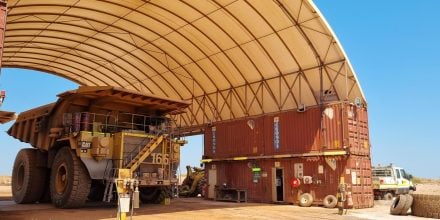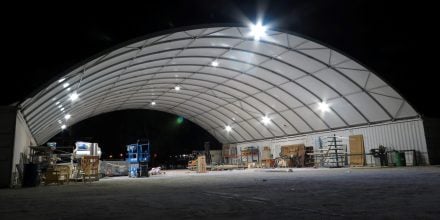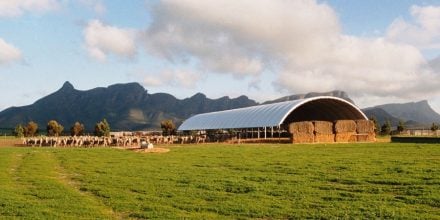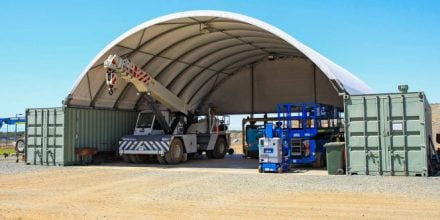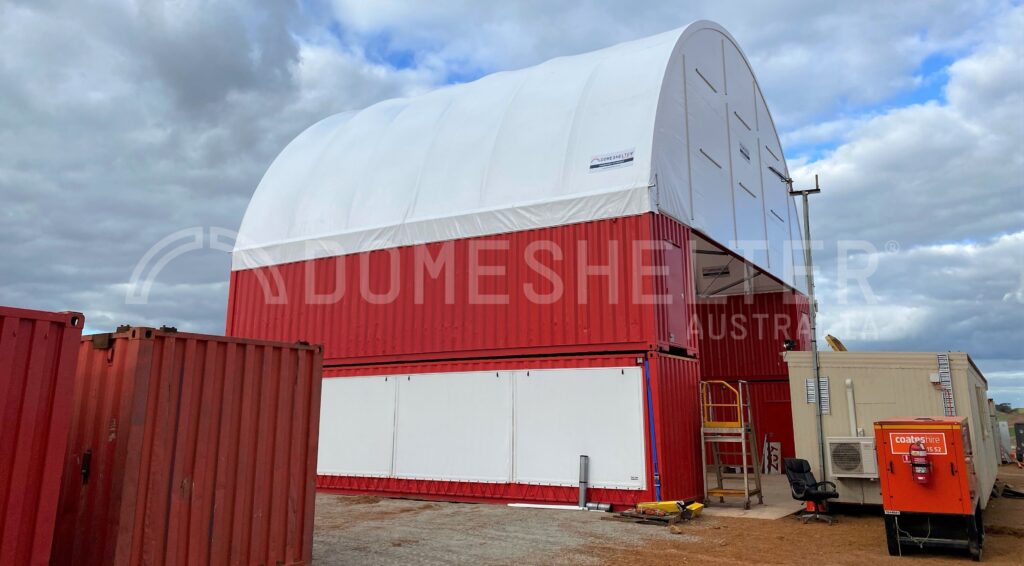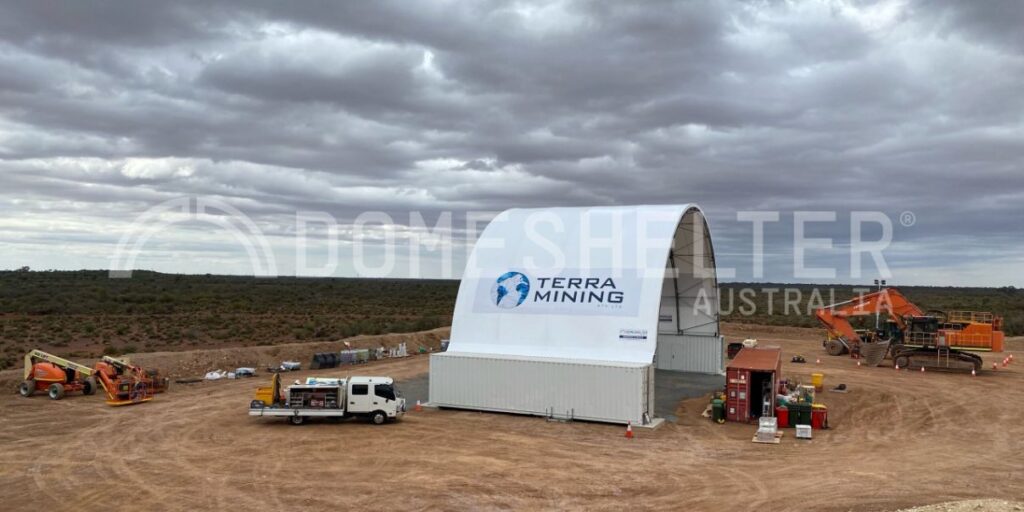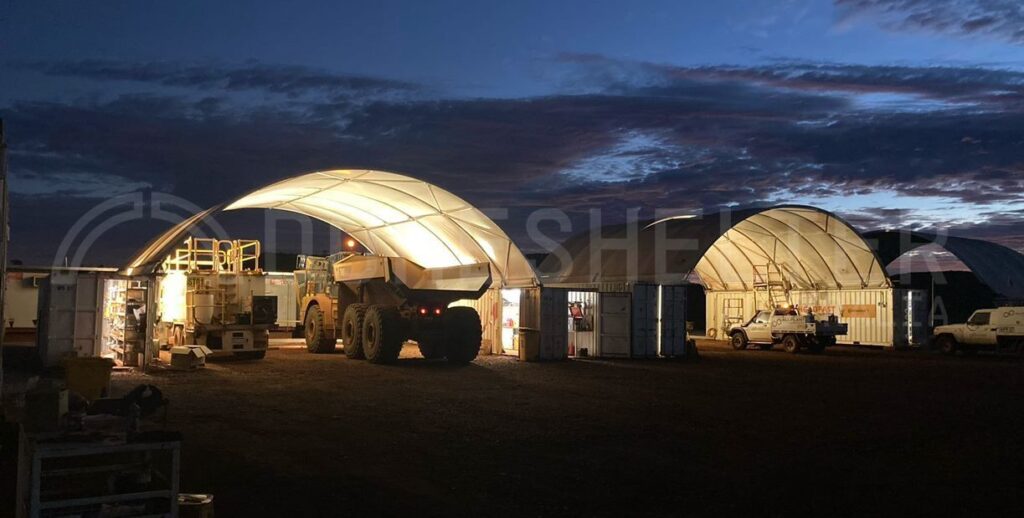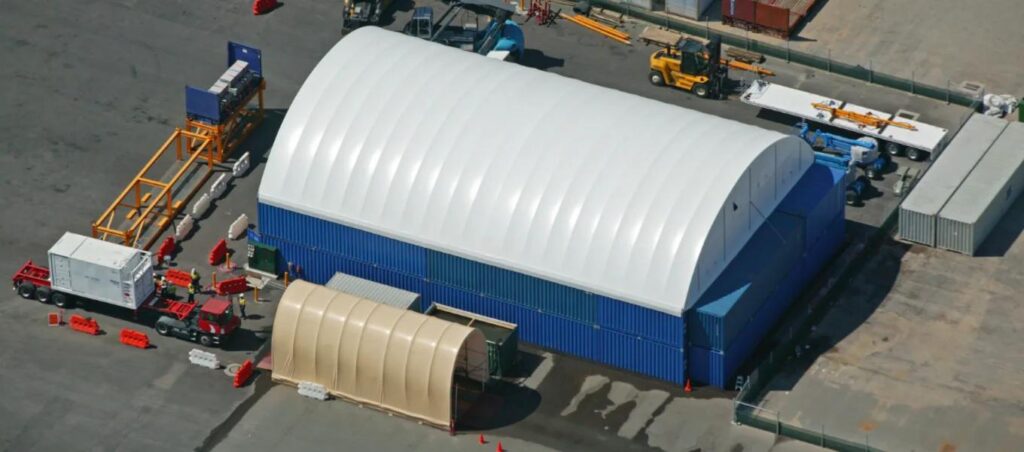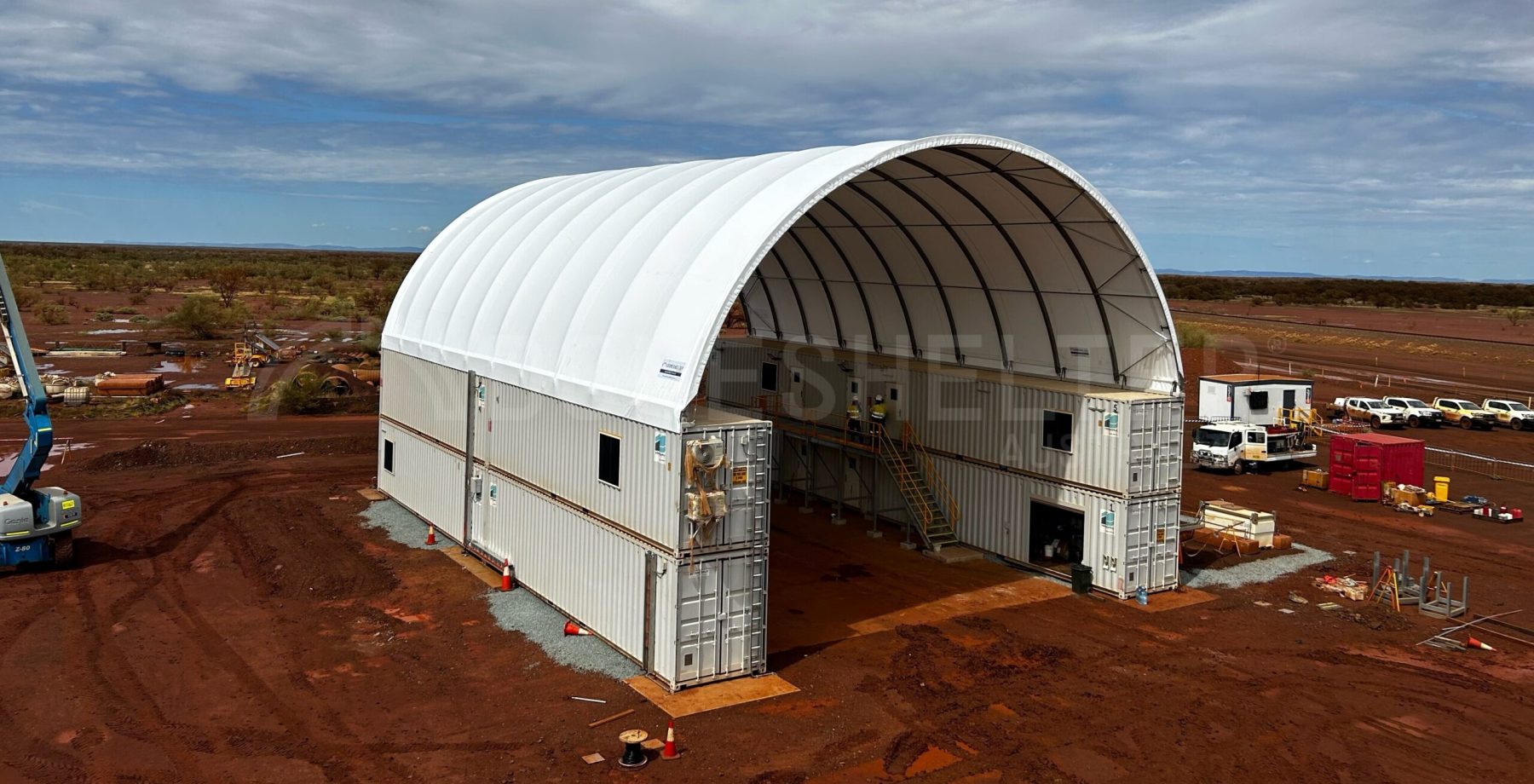
Container shelters – also called container domes or fabric shelters – have transformed the way many businesses approach storage and shelter solutions. These versatile structures offer durability, flexibility, and cost-effectiveness that traditional buildings often struggle to match.
In this comprehensive guide, we will delve into the world of container shelters, exploring their benefits and applications, and why DomeShelter Australia is the one of the leading container shelter suppliers both within Australia and internationally.
Defining ‘Container Shelters’
In the most basic sense, a container shelter is a versatile structure that utilises shipping containers as a foundation, with a fabric tarp stretched over a steel frame for the shelter’s roof (and endwalls, if applicable).
These shelters are designed to provide a protected environment for a wide range of applications, from storage and workshops to vehicle maintenance and more. By repurposing shipping containers as the framework, container shelters offer excellent strength and stability, while the fabric tarp ensures ease of install, affordability, and easy customisation.
Benefits of Container Shelters
- Durability and strength: Container shelters from reputable suppliers are built to withstand harsh weather conditions, including cyclonic winds. Their steel framework provides structural integrity, while fabric tarps are typically UV-resistant, flame-retardant, and highly durable.
- Cost-effectiveness: Compared to traditional buildings, container shelters offer significant cost savings. The use of repurposed shipping containers reduces construction costs, and the fabric roof requires less materials. Installation is straightforward and often done by the client themselves, removing the need for costly labour and making them a more economical choice.
- Versatility and customisation: Container shelters are highly adaptable to various applications. They can be customised in terms of size, layout, and accessories to meet specific requirements. A range of add-ons and changes can be made to suit a range of applications.
- Standardisation: All shipping containers follow globally standardised sizes, meaning containers can be purchased from suppliers anywhere across the globe and will be compatible with a Container Shelter. Sea containers are also regulated by international standards, with certain quality requirements that ensure they will be a durable mounting option for a Shelter.
Benefits of Containers as a Fabric Shelter Mounting Option
Fabric Shelters can be mounted on a range of different ‘substructures’, including posts and concrete walls, to respond to changing client needs. The most popular option by far is sea containers, due to a range of unique benefits:
- Readily available: Many of our clients have spare shipping containers already available on site for use as a Container Shelter substructure, saving time and money. Even where there aren’t existing sea containers on-site, containers are easily sourced and don’t require custom manufacturing as posts or concrete walls would.
- Easy transport: Where sea containers are purchased along with Shelter kits for use as a substructure, the kit can be neatly packaged within the shipping container for easy transport anywhere in the world.
- Easy hold down: Shipping containers can double as the Shelter’s hold down for a simple anchoring solution, saving time and money. Depending on a Container Shelter’s size, easy options such as filling the container with ballast can sufficiently hold down the Shelter for a simple solution that also won’t disturb the ground around the Shelter in the same way as traditional anchoring methods.
Applications of Container Shelters
Due to their highly customisable nature, container shelters suit a range of uses across many industries, and are trusted by some of the world’s largest companies such as Glencore, Halliburton and Rio Tinto.
- Storage and warehousing: Container shelters provide an ideal solution for bulk storage, warehousing, and inventory management. With their large, obstruction-free interior space, they maximize storage potential while protecting valuable assets from the elements.
- Vehicle maintenance and workshops: Container shelters offer a safe and well-lit environment for vehicle maintenance and workshop activities, that can be dismantled and moved with ease to respond to changing worksite needs.
- Mining and industrial: Container shelters are widely used in mining and industrial sectors for applications such as equipment storage, workshop areas, and remote site facilities. Their portability and quick installation make them an excellent choice for challenging and remote locations.
- Agricultural and Farming: Container shelters can provide protection for machinery, livestock, feed, and crops. They offer an efficient and cost-effective alternative to traditional barns or sheds.
Cons of Container Shelters
Container Shelters may not be appropriate for all applications, and have drawbacks that customers should be aware of. It is important to consider all options available and weigh the pros and cons to make the best decision for your specific needs.
- Limited Insulation: One drawback of container shelters is that they lack the same insulation capabilities as many other traditional structure types. Insulation can be improved, but this comes at additional cost and is often a complex process. This can result in temperature fluctuations, making it challenging to maintain a consistent internal climate.
- Rust and Corrosion Risks: Over time, shipping containers used in container shelters may be susceptible to rust and corrosion, especially in high-humidity or coastal areas. Regular maintenance and corrosion prevention measures are necessary to ensure the longevity and structural integrity of the shelter.
- Not Always Suitable for Smaller Applications: There is a misconception that Container Shelters are a very cheap shelter alternative to traditional Structures like steel sheds. While for large Shelter, a Fabric Container Shelter will often be a more cost effective and time efficient choice, for smaller applications – for example carports or garden sheds – a container Shelter is unlikely to be a suitable option. Container Shelters from reputable suppliers are fully engineered and manufactured using quality materials, and for a very small application would likely end up costing more than a steel garden shed or other alternative.
DomeShelter Australia: Your Trusted Provider
DomeShelter Australia is a leading provider of container shelters and container domes. With over 25 years experience, we have delivered durable, Fit-For-Purpose DomeShelter™ Solutions to a range of sectors and exported to over 40 countries globally.
DomeShelter Australia’s products are fully engineered to Australian Standards, able to withstand up to Australian Wind Region D – Cyclonic conditions. Australian made and manufactured with an experienced and dedicated in-house design and engineering team, DomeShelter Australia is an industry leader, offering cutting-edge Shelter Solutions.
The DomeShelter™ Team understands that every business has unique requirements. Every client has a dedicated point of contact and our unique design methodology – DomeShelter™ Logic – ensures that every specific need is met and responded to with a tailored solution.
Conclusion
Container shelters, also known as container domes, offer an innovative storage solution for businesses seeking flexibility, cost-efficiency, and durability. With their modular design, quick installation, and customizable features, these structures have gained popularity in a wide range of industries. Whether you require temporary storage, workspace, or a sheltered area for operations, container shelters are an adaptable and versatile solution.
When seeking a container shelter or container dome, choose a trusted supplier that prioritizes quality, customization, and exceptional service. With the right supplier, like DomeShelter Australia, businesses can confidently invest in a container shelter that delivers long-term value and optimized shelter solutions. Visit the contact page on our website to get in touch with the team or try our free 3D design tool to create your own container shelter model.




